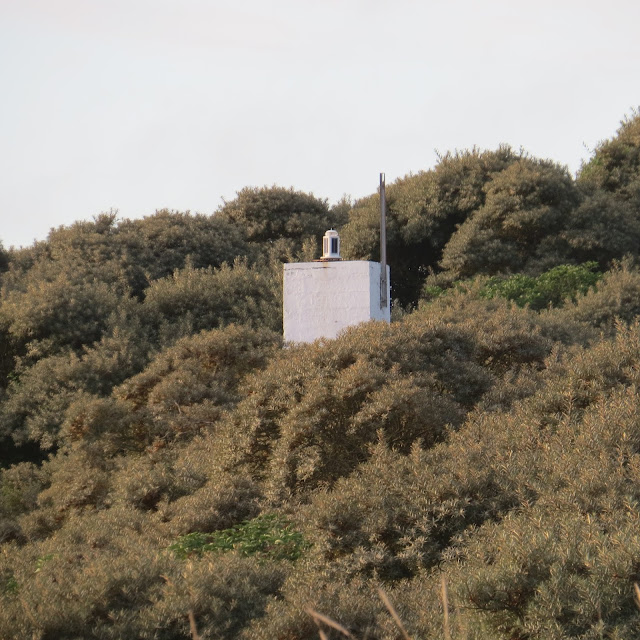Last time I was here in 2008, my wife waited in the car in Greencastle Golf Club Carpark while I scooted down to the 12th Green to take a quick shot of the light and back. This time things were a lot more leisurely. The Golf Course lies along the coast just north of Greencastle itself. I asked in the clubhouse could I take a photo or two of the light and they said there was no problem - just be very careful of people driving off the 12th tee! Its not far from the Clubhouse - a five minute walk.
"1861. Active; focal plane 9 m (30 ft); white flash every 1.5 s. 8 m (27 ft) round cylindrical brick tower with lantern, painted white with green trim" to quote the Lighthouse Directory and who am I to argue? Back in 1870 it exhibited a fixed red light apparently.
The photos above and below were taken from Magilligan Point on the other side of the Foyle.





















































